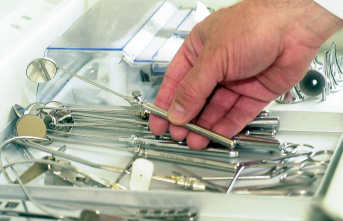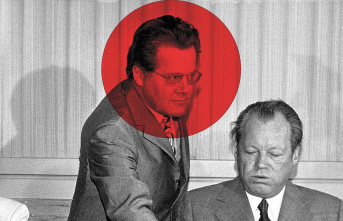The "Columbia" was only 16 minutes away from landing. Millions of people around the world watched the cloudless blue sky over Texas on TV in anticipation of the landing approach - but then the accident happened: the space shuttle broke up and burned up when it entered the earth's atmosphere, all seven crew members died. On Wednesday (February 1st) it was exactly 20 years ago.
In the control center in Florida, where the last incomprehensible words from the "Columbia" were transmitted at 8:59 a.m. local time before the contact was lost, the faces of the family members of the astronauts and the engineers were horrified. "Humanity is being led into darkness by the inspiration of discovery and the yearning for understanding," then-President George W. Bush said shortly afterwards, addressing his country. "Our journey into space will continue."
Parts of the "Columbia" were later found scattered in a radius of 200 kilometers across Texas and the neighboring state of Louisiana - on freeways, in offices, in forests. A day that was supposed to be a triumph for the US space agency Nasa and manned space research ended in disaster. At a memorial service a few days ago, NASA commemorated the victims of the "Columbia" disaster and everyone else who died while working on space travel.
Nasa underestimated damage to the wing
The "Columbia" was not just any space shuttle - it was the first, the cornerstone of a fleet of national icons. On April 12, 1981, it lifted off from pad 39A at Kennedy Space Center, Florida. "STS-1", the code name of the first mission, was followed in a 30-year space shuttle era by four more space shuttles and more than 1300 days in space with 134 flights - until the "Atlantis" at the end of the mission "STS -135" in July 2011, coming from space for the last time, touched down on earth.
Something had already gone wrong at the start of the "STS-107" mission, which - as investigations later revealed - made the disaster during the attempted landing inevitable. A piece of foam insulation from one of the shuttle's fuel tanks broke off, punching a hole in the leading edge of the left wing. NASA scientists had noticed this, but probably underestimated the extent of the damage.
A former Nasa engineer recently wrote in a guest article for the York Daily Record that some Nasa managers had concerns. There was also a request for better photos of the damage, but this was rejected. An emergency rescue mission would likely have been possible, later investigations found. But NASA did nothing.
The piece of insulating foam had damaged the space shuttle's heat shield. When entering the earth's atmosphere, the instruments in the left wing failed one after the other due to overheating and the "Columbia" got out of control shortly before its planned 28th landing and finally broke up. According to studies, the seven astronauts - five Americans, including a woman, as well as the first Israeli in space and an Indian woman - had no chance to protect themselves. Rick Husband, William McCool, Michael Anderson, Kalpana Chawla, David Brown, Laurel Clark and Ilan Ramon were dead within seconds.
The space shuttles are history
Although the "Columbia" disaster was not the first in Shuttle history - seven astronauts died in 1986 when the "Challenger" broke up shortly after launch - it was to change space travel forever. The space shuttle fleet was initially temporarily banished to the hangar for around two years and extensive tests, investigations and improvements were ordered. The result was, among other things, better seats and seat belts.
In the meantime, the shuttles have been completely sorted out - and Nasa engineers have abandoned the idea of space shuttles, even if they can transport heavy cargo. Instead, the focus is on capsules, such as the "Crew Dragon" from Elon Musk's private space company SpaceX, which is already being used to bring astronauts to the International Space Station (ISS). The "Orion" capsule, developed by NASA itself for the "Artemis" missions to the moon and later also to Mars, successfully completed its first real test flight at the end of 2022.
Because these pods are mounted on top of the rocket at launch, rather than next to it, they are less exposed to possible debris. In addition, in the event of an emergency, the astronauts could be freed from the capsule from above before or during launch. "We are working to never repeat our past mistakes," said NASA CEO Bill Nelson.











